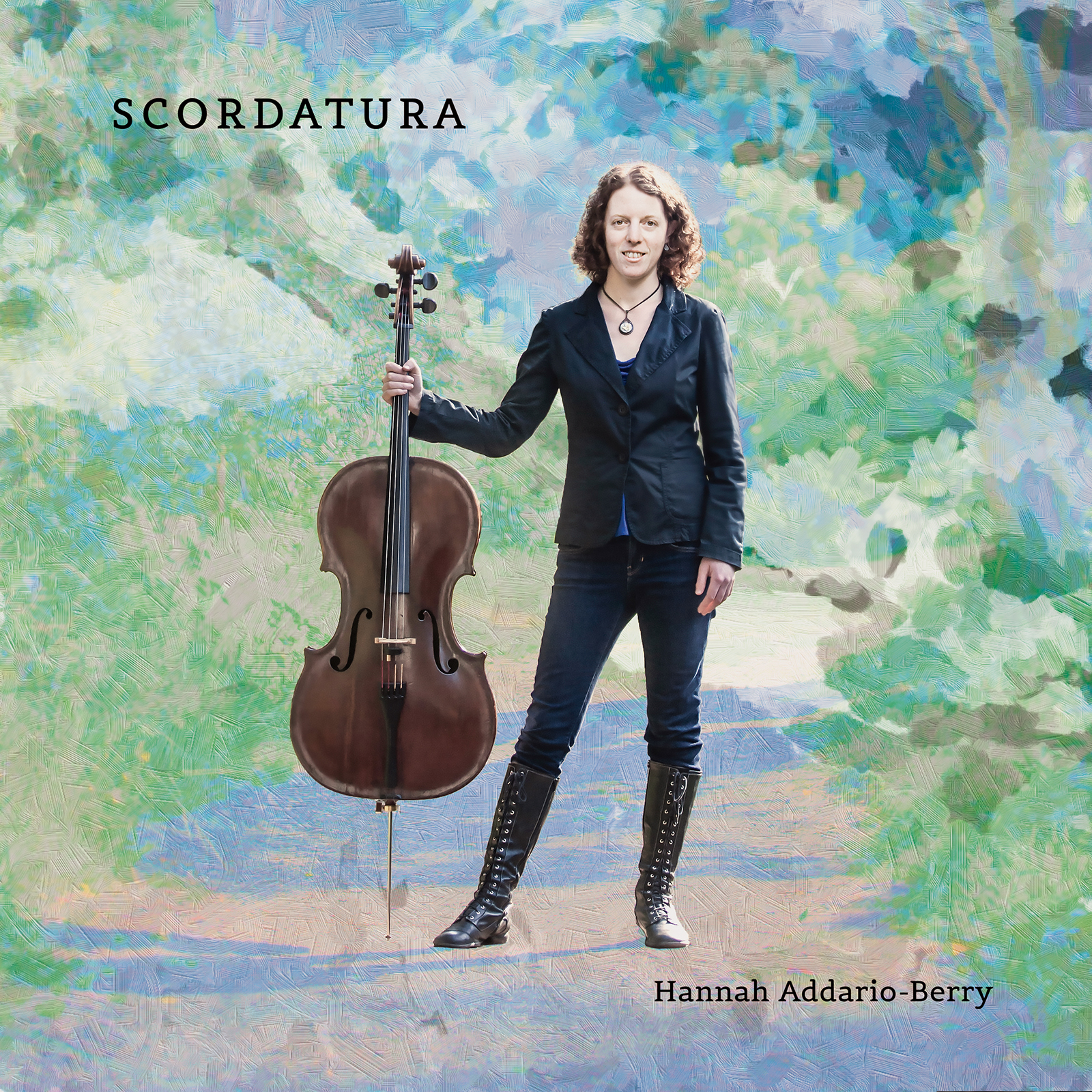This article originally appeared in Issue 40:2 (Nov/Dec 2016) of Fanfare Magazine.
SCORDATURA • Hannah Addario-Berry (vc) • AEROCADE 004 (77:09)
KODÁLY Sonata for Solo Cello, op. 8. B. MILLER Miniatures, Book 3: Koans. A. ROSE Lands End. E. CLARK Ekpyrotic: Layerings IV. JUSTEN Sonaquifer. COONS Myth’s Daughter. LIU Calor
Canadian cellist Hannah Addario-Berry, now working in the San Francisco area, has put together a stunning program for the solo cello, celebrating the centennial of Zoltán Kodály’s milestone Cello Sonata, op. 8. Scordatura, the title of the release, denotes the retuning of a stringed instrument to change its character and tonality. Kodály requires, in his sonata, the G- and C-strings to be tuned a half-step lower, so that the open strings sound a B-Minor seventh chord. This facilitates the shifting B Minor/B Major tonality of the work—including the use of open-string drones—increases the resonance in those keys, and emphasizes the darker timbres of the instrument. Inspired by these qualities, Addario-Berry commissioned 10 friends—“dynamic young composers”—to create new works for the identically tuned solo cello, to be performed with the Kodály. Working on a short timeline, six finished the works in time for inclusion here and in ongoing tours. Composing to complement one of the greatest works for any solo instrument was no doubt daunting. All wisely avoided producing works that invite direct comparison, opting instead for contrasting, occasionally very modern, works.
Listeners familiar with János Starker’s final recording of the Kodály Sonata (1970, Delos) and the first recording by Miklós Perényi (Hungaroton), another Kodály protégé, will find Addario-Berry’s approach quite different. It is more improvisatory in approach, more monumental—her term in promotional material—and considerably more measured, running, at 34:50, a full four minutes longer than either. The soloist doesn’t slight the Hungarian folk qualities, and maybe even enhances them, while making much of the expressive opportunities that a slower tempo affords, so that the sonata, especially the central Adagio, takes on the nature of a dark lamentation. It is not out of character, even if it perhaps goes beyond what the composer envisioned. The arpeggiated chord work in the Allegro molto vivace, which Starker objected to and cut in all but his last recording, is here made intensely effective, and other figures, which go by very quickly at the marked tempo, are allowed to more fully register at Addario-Berry’s freer tempos. Of course, Kodály declared a Starker performance of the sonata just short of “the Bible performance” because of an unscored ritard in the third movement. Heaven knows what he would think of this reading, but I must say—despite my usual respect for composers’ preferences—that it is immensely satisfying.
Such is my enthusiasm for the Kodály, I’m afraid I’ve left little room for comment on the other six works. It is an eclectic lot in style, but all are essentially tonal. Possibly because she is good at it, two involve reading by the soloist, between and sometimes during the music. In Miniatures, Book Three: Koans, Brent Miller incorporates Zen meditation statements, on which the music reflects in the styles that evoke several of the composer’s influences: Ligeti, Schnittke, Crumb, Tenney, Xenakis, and Pärt. In Myth’s Daughter, Lisa Renée Coons lifts phrases from familiar Grimm’s fairytales nostalgically recalled from her youth, which the soloist states, whispers, and sings as a sort of enhanced narrative in time to the music. Alisa Rose finds inspiration in the topography of a San Francisco trail for the contours of Lands End, and in Appalachian fiddle bowing to establish its essential bluegrass personality. Gloria Justen’s vivacious Sonaquifer is more Eastern European, with gestures from the Bach Suites providing contrasting ideas. Rock music seems to be the starting point for Calor by cellist/composer Jerry Liu, as he experiments with indeterminacy by eliminating note values and meter.
Eric Kenneth Malcolm Clark’s Ekpyrotic: Layerings IV, is, however, the only truly experimental composition. He uses overlapping multiple takes of the same music to create musical complexity out of inevitable variations, as the soloist plays a prepared cello—miniature clothespins on the strings to create a bell-like ringing—and vocalizes. (I have only a vague sense of what this all might have to do with ekpurosis, or the ekpyrotic universe model.) This is a short four-minute version of the work. A longer version, at over 11 minutes, can be downloaded after purchase of the release.
Recommendation, then? Absolutely: The outstanding Kodály Sonata performance alone would be reason enough to purchase this CD. The new works add plenty of creative and agreeable music to be explored, and Addario-Berry’s performances rivet attention. The recording emphasizes the rich lower range of the cello, and is attractively clear and rather close in a resonant space. Notes are succinct, but are expanded upon at scordaturacello.com and a linked Bandcamp download page. Ronald E. Grames

